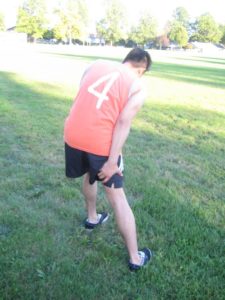An individual can end up with sore thighs every now and then. The thigh is part of the body between the pelvis and the knee. The quadriceps which are the extensor muscles in the top of the thigh are the largest groups of muscles in the thigh. The quadriceps is composed of rectus femoris, vastus lateralis, vastus intermedius and vastus medialis that helps to extend and straighten the lower leg.
The hamstrings are also large group of muscles which are flexor muscles found at the back of the thigh. The hamstrings brings the leg backward and flex the leg toward the buttocks. Whether caused by sitting in the same position for a longer time, performing intense exercises and lack of muscle conditioning, sore thighs can occur which makes walking difficult and painful.
Treatment

- Apply an ice pack on the affected thigh. Wrap the ice pack using a small towel and then place it on the affected thigh for at least 10-15 minutes for 2-3 hours. You can keep the ice pack in place by wrapping it with an elastic bandage around the thigh.
- Massage the affected area to relieve the tension on the muscles. If there is a knot in the muscles, place the thumb on the area and press it gently until the knot disappears.
- Elevate the legs by placing a couple of pillows under the heel, to lessen inflammation and swelling.
- Take the prescribed non-steroidal anti-inflammatory drugs (NSAIDs) such as ibuprofen or acetaminophen to lessen the swelling and minimize the pain.
- Avoid performing exercises until the soreness is reduced and prevent the risk of tearing and straining of the muscles. Perform light stretching for the thigh such as pulling the foot toward the buttocks and cross one leg over the other knee and lean forward to stretch the thigh.
- In bathtub filled with warm water, mix it 1-2 cups of Epsom salt. Mix well until fully dissolved. Soak in the water for at least 15 minutes or until the warm water becomes cool. Perform this process at least 3 times every week. Avoid this procedure when suffering from conditions such as high blood pressure, diabetes and heart problems.
- Low levels of magnesium in the body can lead to sore thighs. Eat foods rich in magnesium such as molasses, pumpkin seeds, squash, spinach and cocoa powder.
- Using virgin coconut oil is also good for the condition. Use 2-3 tablespoons of virgin coconut oil every day in cooking foods and apply coconut oil on foods.
Tips
- If the affected area is injured such as bruising or tenderness when touched, it is vital to rest and take pain medication to lessen the pain. If the symptoms still persist, seek medical help immediately.
- Always start a workout with a 5-10-minute session of walking to prevent sore thighs. Perform at least 5-10 minutes of stretching exercises to prevent developing sore thighs.
